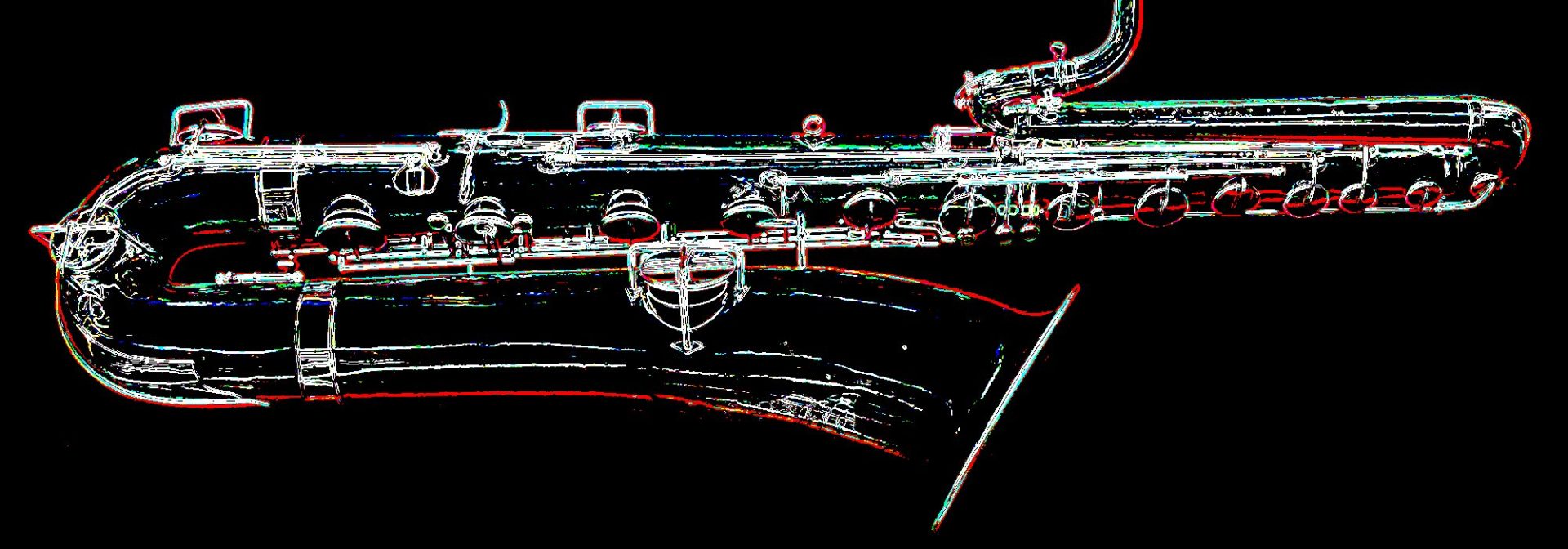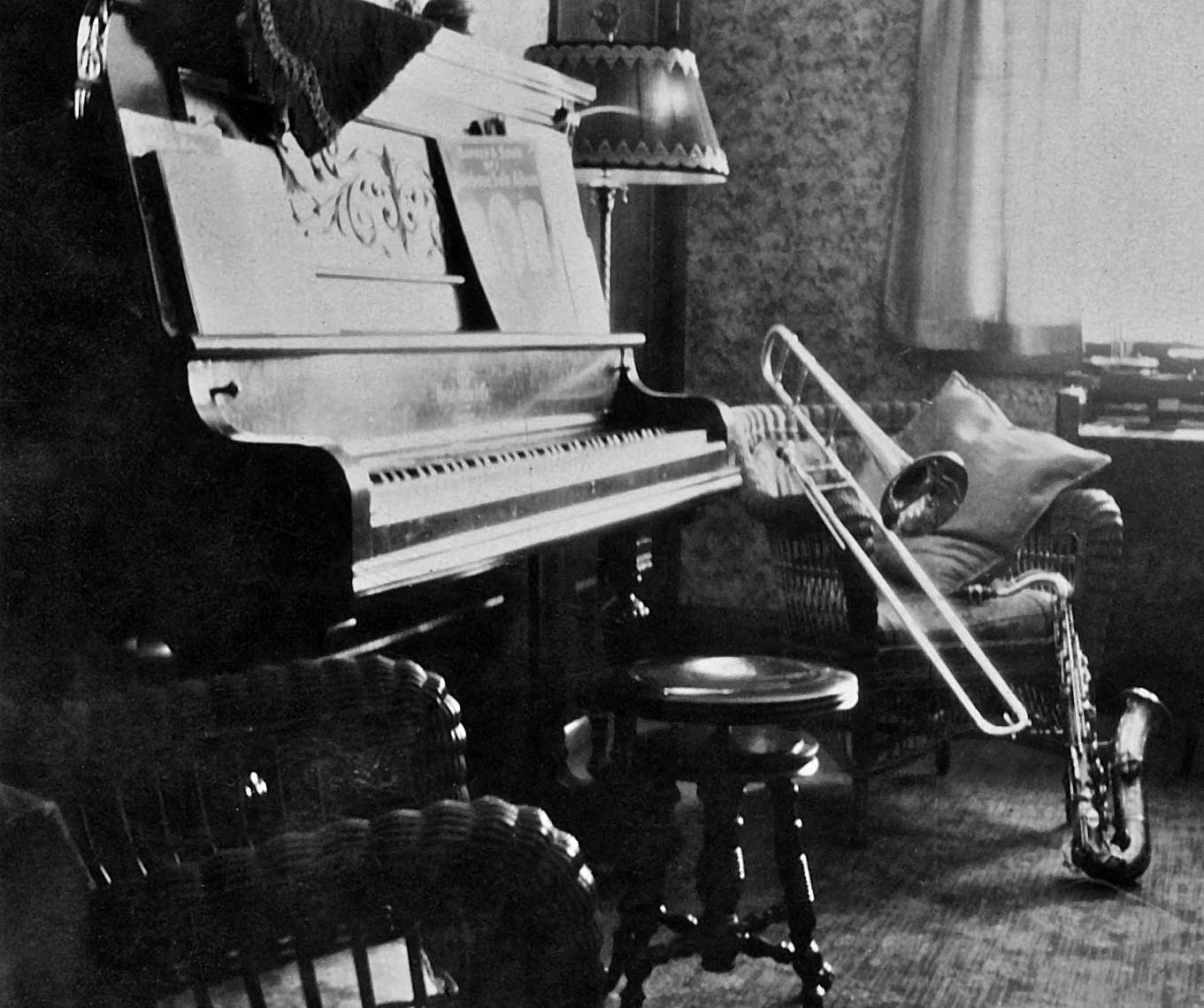I first saw this photo by Greg Wass posted to Flickr a few weeks ago, and immediately thought: Aha, a C melody saxophone in its natural environment.
Here’s a typical 1920s front parlour with all the accoutrements needed for an evening of entertaining the neighbours and friends. We’ve got the piano, sheet music, a couple of chairs, a piano, trombone, and a C melody saxophone… or is it?
Winnipeg 1933: “our front room”
Photo posted to Flickr by Greg Wass Source: Flickr
When I took a closer look at the photo today, I was suddenly no longer so sure what kind of sax this was. You know what the say about real estate: location, location, location. Well this horn’s location made my mind automatically see a C melody.
However, being able to tell the difference between Bb and C pitched tenors is not always so simple—especially when dealing with vintage B&W photos that have been converted via a scanner from film to digital. Furthermore, the saxophone in this photo is not the focal point, which adds to the blur, and therefore can’t be cleaned up in Photoshop.
Nonetheless, if you look at the photo at full size, some of the horn’s features are identifiable:
- It has a curved neck.
- This doesn’t rule out anything other than a straight neck Conn C melody saxophone.
- It doesn’t have a man in the moon neck brace, like we see in the Buescher C melodies.
- It does have a Mercedes-style key guard on the low C key, like we know that Conn used on its horns (including Pan American).
- Since a number of German saxophone manufacturers were heavily influenced by Conn, it could be one of those as well, but not all made C-pitched horns. Notably, JK didn’t.
All of this brand research/speculation is interesting, but is it a C melody saxophone? Or is it a Bb tenor?
After spending more than half an hour scouring the Internet looking at images of Conn New Wonder C mels, I am not any wiser. Trying to ID a sax from only 1, vintage, grainy, B&W photograph is really a fool’s errand. So let’s just leave it up to individual imagine.
Me? I’m going to go with the old real estate adage of location, location, location. Since this was a family’s front parlour in 1922, and it was set up in such a way that it could be used for entertaining, I’m going to say the horn in the B&W photo was the then-über-popular C melody saxophone—one like depicted in the following ad by rival saxophone company Buescher.
Update June 2024: Since this post was originally written, I have written an article on how to distinguish a C melody saxophone from a tenor or alto.





Dear Helen ,going by scale the sax seems very positively a C Melody as a tenor would have appeared slightly bigger . I do have a Wurlitzer C Melody which is probably a Martin stencil from the 20’s period with the same curved swan like neck and if it was placed alongside a trombone in the same position as in this picture it would be the same size .Thanks for this interesting post .